Ebook Việt Hoá] Plant parenting: Easy ways to make more houseplants vegetables and flowers - LESLIE F. HALLECK
[Ebook Việt Hoá] Plant parenting – LESLIE F. HALLECK (Nhân giống cây) – HAND TOOLS (Dụng cụ cầm tay)
- Nguồn: [Ebook Việt Hoá] Plant parenting: E easy ways to make more houseplants, vegetables, and flowers – LESLIE F. HALLECK (Nhân giống cây: Những cách dễ nhất để nhân giống cây cảnh trong nhà, rau và hoa)
- Biên tập: Dũng Cá Xinh (Tháng 08/20201)
- Dịch: Huyền Nguyễn
English
Containers specifically made for starting seeds and cuttings range in size, shape, color, and material. Some are better for seeds; some are better for cuttings. Prefabricated seed-starting and watertight cutting trays are already segmented into small cells or plugs for you. You’ll most commonly find seed-starting kits and plug trays sold in the twenty-five to fifty-cell count size.
I regularly use plug trays for starting a mixture of different plant varieties. Just because you have a fifty-cell plug tray, doesn’t mean you have to start fifty tomato plants. You can start ten seeds each of five different types of vegetables or flowers in the same tray, or ten seeds each of five different tomato varieties if you really love tomatoes! Do make sure the seeds you start together do well in similar growing conditions. You can start seeds of warm-season crops such as tomatoes, peppers, and eggplant in the same tray or groups of cool-season veggies such as broccoli, cauliflower, and kale together. Remember to label your rows or the individual cell, so you won’t forget what you planted where.
You can also find some smaller options that hold six to twelve cells or plugs. I typically use the smaller trays to start specialty plants such as succulents or a handful of cuttings. You don’t have to use prefabricated seed trays—individual small plastic pots, biodegradable plug packs, small clay pots, or any number of other options will also work well.
Container size is very important when starting new seeds and cuttings. When choosing a container for starting your seeds, look for one that is no more than 2 to 3 inches deep. Larger containers that hold more soil may cause problems for tiny seedlings, as they can hold too much moisture or wick moisture away from the still-small root system.
The container in which you directly grow the seedling or cutting will typically have a drainage hole or should be porous. That means water will drain out of the drainage hole. Seedlings and cuttings grown in porous containers or plugs can be placed in solid trays to catch water runoff and hold a bit of extra moisture and humidity as the roots mature.
If you are careful not to overwater you can also grow seeds and cuttings in containers without drainage holes. I’ve repurposed many such containers for a variety of propagation needs. For example, I’ve found that silicone ice cube and baking molds make handy seed and cutting trays. The plugs pop right out of the containers after they are rooted. I use the larger ones for cuttings and the smaller ones for tiny cactus and succulent seeds.
You can grow microgreens in a watertight seedling tray or a variety of other shallow containers without drainage holes, as you’ll be harvesting the seedlings in short order.
Before you choose the type of container in which to start your seeds or cuttings, decide if you want to reuse the container. A container made from clay or plastic, for example, will be more stable and can be reused many times. Biodegradable containers and seed plugs, on the other hand, allow you to plant the entire cell directly into a larger pot or your garden without lifting out the seedling or disturbing its root system. The materials break down naturally in the soil.
Compressed fiber seedling pots can be planted directly into the ground or a larger container of soil. Simply fill them with soil and drop in seeds or stick cuttings. You don’t need to remove the seedling or cutting once it’s ready to be transplanted, as the containers are biodegradable and plant roots will work their way through the fiber. Just make sure to tear away the top of the container that is sticking out above the soil line.
When you want to be as thrifty or sustainable as possible in your propagation practices, you can use recycled materials or make your own pots and plugs. There are many recycled materials you may have on hand – egg cartons, egg shells, plastic containers from the grocery store, clear plastic cups, Styrofoam cups, and the like – that work well for starting seeds and cuttings. Shallow bowls and planters can be used to germinate seeds and grow microgreens. You can also create DIY containers and seed plugs.
You can use a paper pot maker to create your own small, biodegradable pots. Simply cut a 3- by 10-inch section of newspaper and wrap it around the pot maker handle, and tuck under the bottom edges. Then press the paper into the pot maker base. This will press the paper into a shape, which will then hold soil. Slide the paper pot off the handle. Set the newspaper pots into a seed tray and fill with growing media. Once plants root to the edge of the paper or grow through it, you can plant the seedling with the paper pot into the ground or into a larger pot. The newspaper will degrade naturally.
Another option is to skip the container altogether by using a soil blocker. A soil blocker is a metal form that creates compressed square soil plugs out of your growing media. These soil blocks sit in a solid seed tray, just like peat pellets or homemade seed plugs. It can be challenging to get lightweight soilless mixes to hold their shape, so you may need to add a binder in the form of denser organic matter or a bit of clay-based soil—or use a heavier potting mix. Of course, reintroducing bioactive matter into your soilless mix means it is no longer sterile. If you’re an organic gardener, this may be more desirable, but you’ll need to carefully manage moisture and humidity to minimize fungal and bacterial diseases.
As you become more experienced with propagation, you’ll discover your favorite types of containers and which ones work best for you.
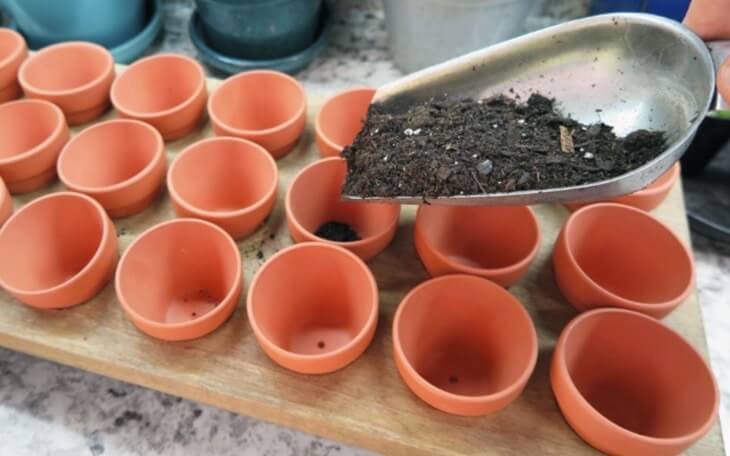
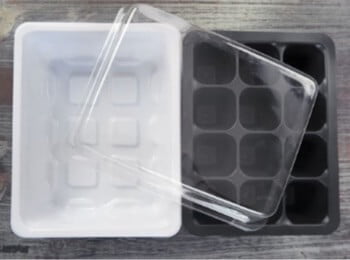
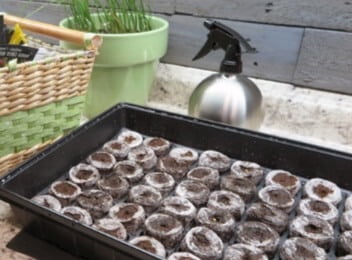
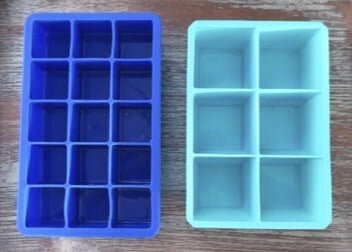
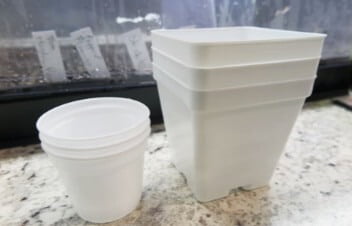
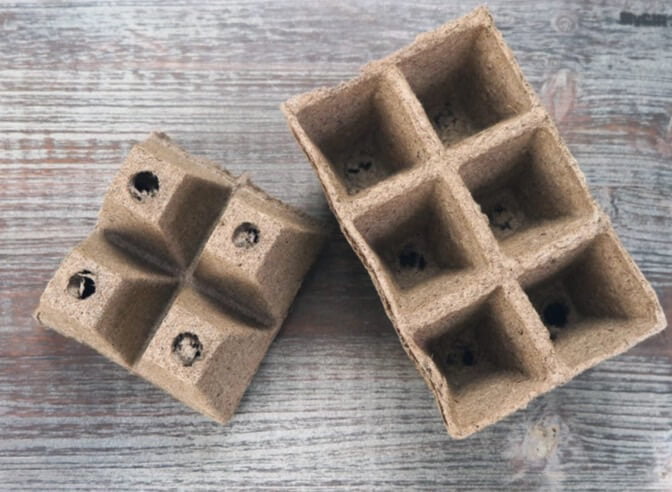
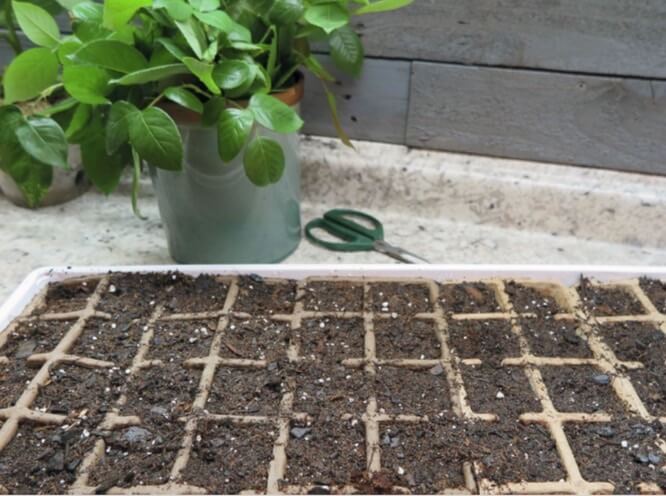
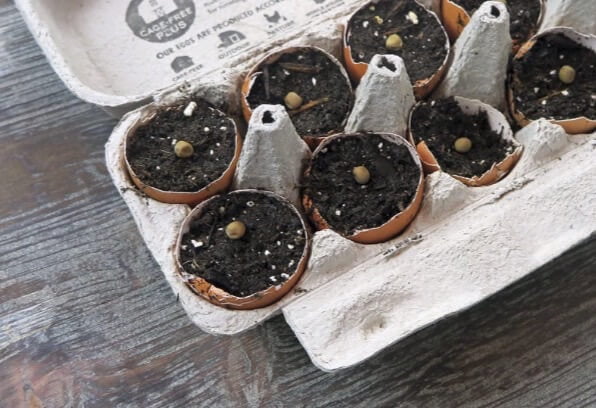
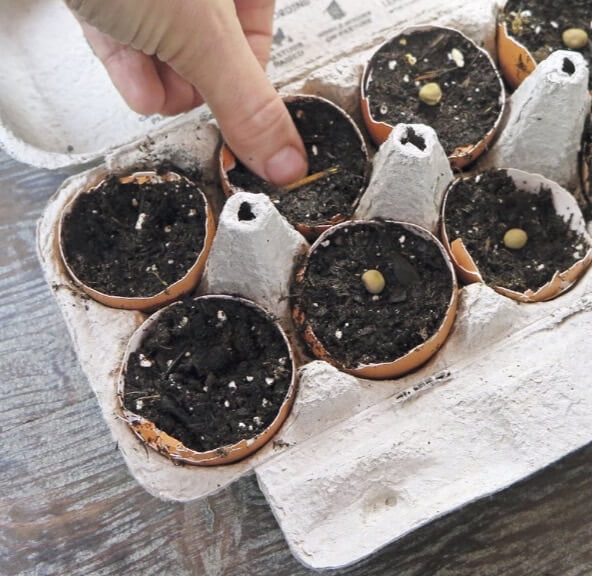
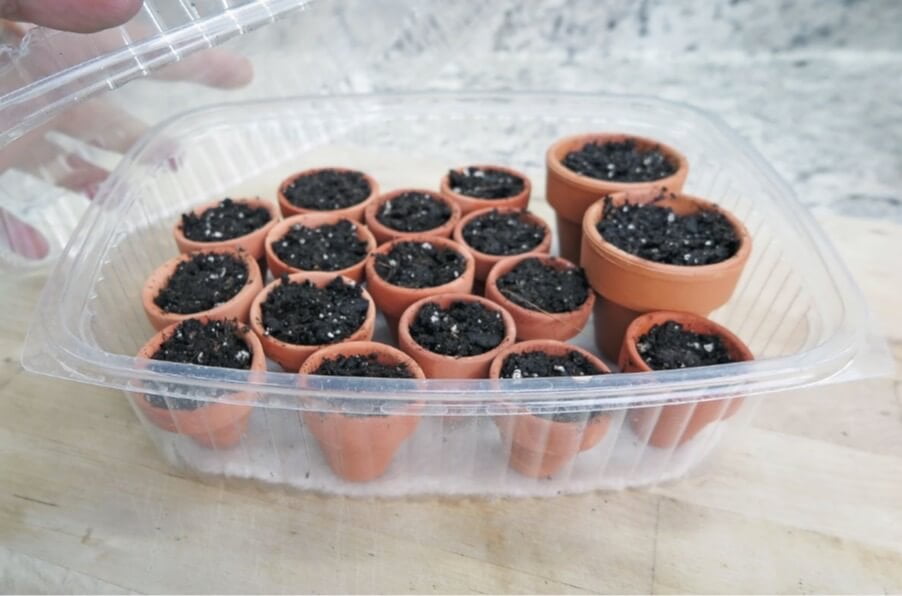
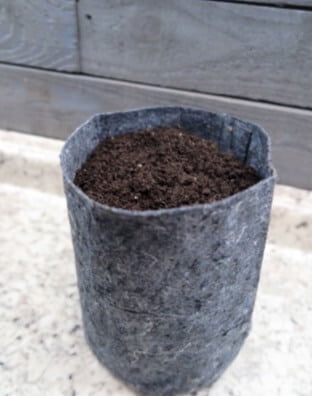
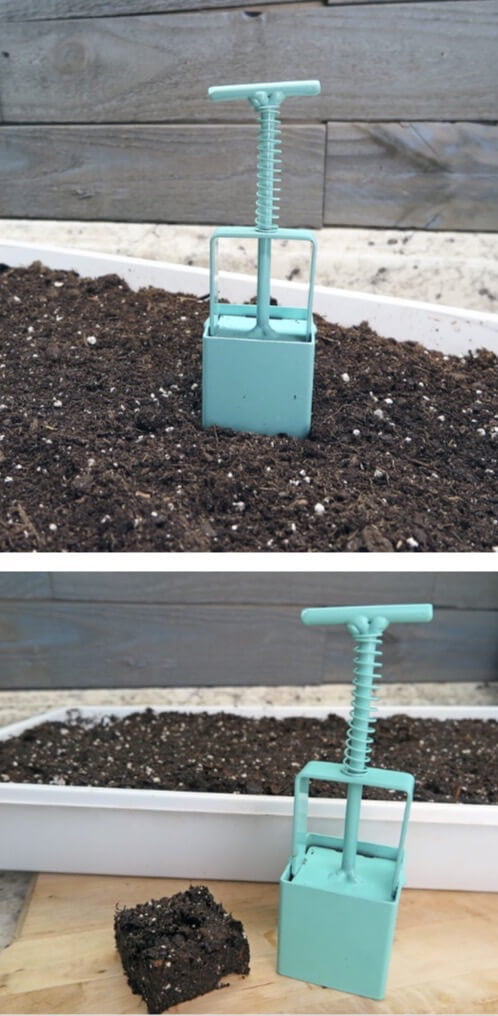
Tiếng Việt
Các chậu chứa được chế tạo đặc biệt để gieo hạt giống và giâm cành có kích thước, hình dạng, màu sắc và chất liệu khác nhau. Một số loại phù hợp hơn để gieo hạt; trong khi một số loại tốt hơn để giâm cành. Khay gieo hạt và khay giâm cành nước đúc sẵn đã được phân chia thành các ô nhỏ hoặc ô cắm. Bạn sẽ thấy phổ biến nhất là bộ dụng cụ gieo hạt giống và khay cắm được bán ở kích thước có số lượng ô từ 25 đến 50 ô.
Tôi thường xuyên sử dụng khay cắm để trồng các giống cây trồng khác nhau. Khi bạn có khay cắm 50 ô, không có nghĩa là bạn phải bắt đầu trồng 50 cây Cà Chua (tomato). Bạn có thể gieo 10 hạt mỗi loại của năm loại rau hoặc hoa khác nhau trong cùng một khay, hoặc mười hạt mỗi loại của năm loại Cà Chua (tomato) khác nhau nếu bạn thực sự yêu thích Cà Chua (tomato)! Hãy chắc chắn rằng những hạt giống bạn gieo cùng nhau phát triển tốt trong điều kiện phát triển tương tự. Bạn có thể gieo hạt giống các loại cây mùa nóng như Cà Chua (tomato), Tiêu (pepper) và Cà Tím (eggplant) vào cùng một khay hoặc các nhóm rau mùa mát như Bông Cải Xanh (broccoli), Súp Lơ (cauliflower) và Cải Xoăn (kale) cùng nhau. Hãy nhớ gắn nhãn các cây giống hoặc ô riêng lẻ, vì vậy bạn sẽ không quên bạn đã trồng những cây gì và ở đâu.
Bạn cũng có thể tìm thấy một số loại khay ươm nhỏ hơn chứa sáu đến mười hai ô. Tôi thường sử dụng các khay nhỏ để bắt đầu trồng các loại cây đặc biệt như cây mọng nước hoặc một số ít cây giâm cành. Bạn không cần phải sử dụng khay hạt đúc sẵn, từng chậu nhựa nhỏ, gói gieo hạt có thể phân hủy sinh học, chậu đất sét nhỏ hoặc bất kỳ loại nào khác cũng sẽ phù hợp.
Kích thước chậu rất quan trọng khi bắt đầu gieo hạt và giâm cành mới. Khi chọn chậu để ươm hạt giống, hãy tìm chậu không sâu quá 2 đến 3 inch. Những chậu lớn hơn chứa được nhiều đất hơn có thể gây ra vấn đề cho những cây con nhỏ bé, vì chúng có thể quá ẩm hoặc quá khô.
Chậu mà bạn trực tiếp trồng hoặc giâm cây con thường sẽ có lỗ thoát nước hoặc phải xốp để giúp nước thoát ra khỏi lỗ thoát nước. Cây con và cành giâm được trồng trong thùng xốp hoặc khay cắm có thể được đặt trong khay chắc chắn để hứng nước chảy và giữ thêm một chút độ ẩm khi rễ trưởng thành.
Nếu muốn phòng không để nước quá ngập, bạn cũng có thể trồng hạt giống và giâm cành trong các chậu không có lỗ thoát nước. Tôi đã sắp xếp lại nhiều chậu như vậy để sử dụng cho nhiều nhu cầu nhân giống khác nhau. Ví dụ, tôi nhận thấy rằng khuôn làm đá và khuôn làm bánh bằng silicon tạo nên các khay giâm cành và gieo hạt giống tiện dụng. Các ô cắm bật ra khỏi khay chứa sau khi chúng ra rễ. Tôi sử dụng những khay lớn hơn để giâm cành và những cái nhỏ hơn để gieo hạt Xương Rồng và hạt cây mọng nước nhỏ.
Bạn có thể trồng cây vi sinh trong khay cây con kín nước hoặc nhiều loại khay nông khác không có lỗ thoát nước, vì bạn sẽ thu hoạch cây con trong thời gian ngắn.
Trước khi bạn chọn loại khay chứa để bắt đầu gieo hạt hoặc giâm cành, hãy cân nhắc xem bạn có muốn sử dụng lại khay đó hay không. Ví dụ, một khay làm từ đất sét hoặc nhựa sẽ ổn định hơn và có thể được tái sử dụng nhiều lần. Mặt khác, khay chứa phân hủy sinh học và khay gieo hạt giống cho phép bạn trồng trực tiếp toàn bộ ô vào chậu lớn hơn hoặc khu vườn của bạn mà không cần nhấc cây con ra hoặc làm ảnh hưởng đến hệ thống rễ của nó. Các vật liệu phân hủy tự nhiên trong đất.
Chậu cây giống dạng sợi nén có thể được trồng trực tiếp xuống đất hoặc một thùng đất lớn hơn. Đơn giản chỉ cần lấp đất và thả hạt giống hoặc cắm cành giâm vào. Bạn không cần phải loại bỏ hoặc cắt cây con khi nó đã sẵn sàng để cấy ghép, vì các ô chứa có thể phân hủy sinh học và rễ cây sẽ phát triển tự nhiên qua chất xơ. Bạn chỉ cần đảm bảo xé bỏ phần trên của ô chứa nhô ra trên mặt đất.
Khi bạn muốn tiết kiệm hoặc lựa bọn một phương án bền vững nhất có thể để thực hành nhân giống, bạn có thể sử dụng vật liệu tái chế hoặc làm chậu và khay cắm của riêng bạn. Có rất nhiều vật liệu tái chế mà bạn có thể sử dụng như hộp đựng trứng, vỏ trứng, hộp nhựa từ cửa hàng tạp hóa, cốc nhựa trong, cốc xốp, và những thứ tương tự, đây là những vật liệu hữu ích cho việc ươm hạt và giâm cành. Bát nông và chậu trồng cây có thể được sử dụng để gieo hạt giống và trồng cây siêu nhỏ. Bạn cũng có thể tự tạo hộp đựng và khay cắm hạt giống.
Bạn có thể sử dụng máy làm chậu bằng giấy để tạo ra những chiếc chậu nhỏ có thể phân hủy của riêng mình. Chỉ cần cắt một đoạn giấy báo có kích thước 3 x 10 inch và quấn quanh tay cầm của bộ làm chậu giấy, và nhét dưới các cạnh dưới cùng. Sau đó ấn giấy vào đế tạo chậu. Thao tác này sẽ ép tờ giấy thành hình dạng chậu và có thể giữ đất. Trượt chậu giấy ra khỏi tay cầm. Đặt các chậu giấy vào khay gieo hạt và đổ đầy chất trồng. Sau khi cây mọc rễ đến mép giấy hoặc mọc xuyên qua giấy, bạn có thể trồng cây con bằng chậu giấy xuống đất hoặc vào một chậu lớn hơn. Tờ báo sẽ tự phân hủy.
Một lựa chọn khác là bỏ qua hoàn toàn khay chứa bằng cách sử dụng dụng cụ chặn đất. Dụng cụ chặn đất là một dạng kim loại tạo ra những miếng đất hình vuông nén làm từ chất trồng. Những khối đất này nằm trong khay hạt chắc chắn, giống như viên than bùn hoặc khay cắm hạt tự chế. Có được hỗn hợp không đất nhẹ để giữ được hình dạng của viên nén có thể là một thách thức, vì vậy bạn có thể cần thêm chất kết dính hữu cơ đậm đặc hơn hoặc một chút đất sét, hoặc sử dụng hỗn hợp bầu nặng hơn. Tất nhiên, việc đưa chất hoạt tính sinh học vào hỗn hợp không chứa đất có nghĩa là nó không còn vô trùng nữa. Nếu bạn là người làm vườn hữu cơ, điều này có thể là một lựa chọn đáng thực hiện hơn, nhưng bạn sẽ cần kiểm soát độ ẩm cẩn thận để giảm thiểu các bệnh do nấm và vi khuẩn gây ra.
Khi có kinh nghiệm hơn trong việc nhân giống, bạn sẽ khám phá ra các loại khay chứa yêu thích của mình và loại khay chứa nào phù hợp nhất với bạn.












![[Ebook Việt Hoá] Plant parenting – LESLIE F. HALLECK (Nhân giống cây) – HAND TOOLS (Dụng cụ cầm tay) [Ebook Việt Hoá] Plant parenting – LESLIE F. HALLECK (Nhân giống cây) – HAND TOOLS (Dụng cụ cầm tay)](https://vn1.vdrive.vn/codai.net/2021/02/ebook-huong-dan-nhan-giong-cay-canh-rau-va-hoa-03.jpg)


